Meeting deadlines, delivering projects on time, and consistently impressing clients is every project manager’s dream.
Sadly, it’s not every manager’s reality, especially when juggling multiple projects.
If you’re struggling to please your clients and prevent setbacks, you’re definitely not alone. That said, with preparation and proper mitigation strategies, you can significantly increase your chances of success.
Consider this text your actionable guide for minimizing delays and optimizing your chances of meeting deadlines at work!

In this article:
What is a deadline?
A deadline is the latest date by which you must finish a task or project.
In business, deadlines typically exist to help us structure our work and prevent us from succumbing to Parkinson’s Law, which states that work will expand to fill the time allotted to it.
In other words, deadlines help us improve task and time management, minimize procrastination, and hold ourselves responsible for the work we do.
Why is it important to meet deadlines at work?
Being able to consistently meet deadlines at work is incredibly beneficial on both a personal and a broader professional level.
On a personal level, meeting deadlines at work helps you avoid stressful situations where you are constantly under pressure from the looming deadline, pulling all-nighters, fueled solely by caffeine and anxiety. Essentially, it helps maintain your mental health and keeps you ready to take on new challenges at work.
On a professional level, consistently meeting deadlines demonstrates your capabilities, professionalism, and efficiency to your superiors or clients, which builds trust and improves your reputation, making people more likely to want to work with you again.
Moreover, doing your work on time increases your productivity, allowing you to take on more work in a shorter period of time. This, in turn, inevitably leads to higher profits.
💡 Plaky Pro Tip
Stay productive and keep tabs on all your deadlines at work by trying out a daily planner app:
10 expert tips for meeting deadlines consistently
While it’s true that issues can pop up at any moment without warning and cause delays, we have a few tips for you from reputable experts that will help you prepare for these situations — and maintain control over your projects.
1. Specify project deliverables
The first step on the road to meeting your deadlines is to:
- Understand the goals of the project, and
- Specify the main deliverables you need to create to achieve those goals.
To define project deliverables and goals, speak with your key stakeholders and understand their needs and expectations.
A clear understanding of what it is your stakeholders want is the foundation for all your future work.
Get it wrong, and, at best, you’ll be forced to backtrack and redo a portion of the work, wasting your time and money in the process. At worst, you’ll lose your client and damage your reputation.
So, make sure to get it right.
Create a list of project deliverables in Plaky
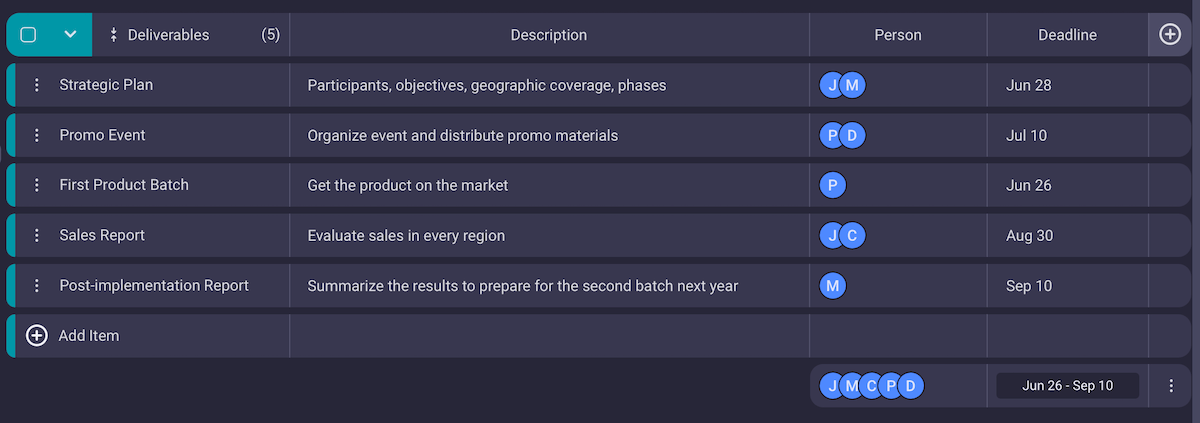
💡 Plaky Pro Tip
Learn how to save time and money on a project:
2. Split work into smaller tasks
Once you have your deliverables sorted out, define the work needed to complete them and then break it down into smaller tasks.
Not only will this make the work appear more manageable, but it will also make it easier to allocate project resources and create a more accurate estimate of the amount of time needed to complete the work.
This will help you get a better idea of how to tackle the project, says Krissy Metzler, Goal Achievement Coach and co-founder of The Goalden System.

“Many times, we find ourselves jumping into a project too quickly and lumping large tasks together rather than delineating them into individual points. I suggest writing out all of the steps needed and then reviewing the list to incorporate how long you believe each task will take. By taking these 2 steps, you are setting yourself up for gaining a clearer understanding of how you will attack the project.”
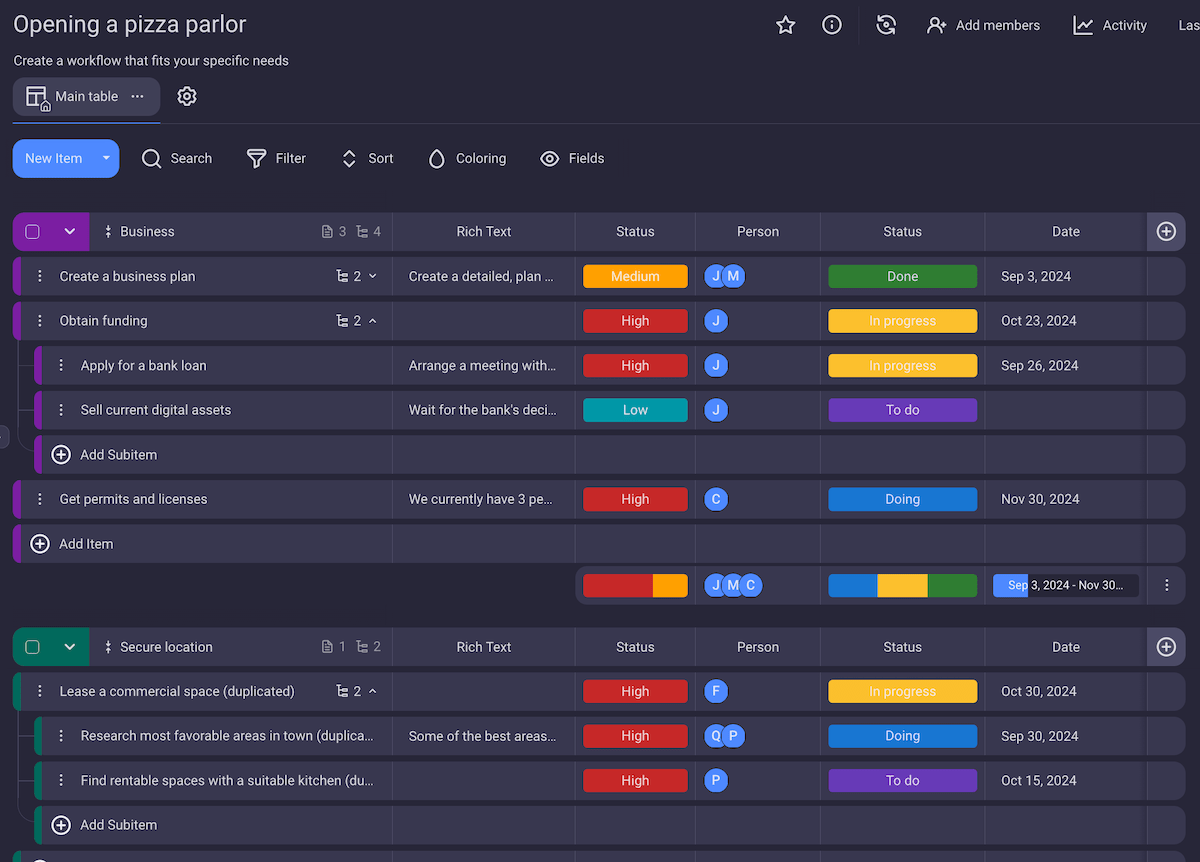
💡 Plaky Pro Tip
If you want to know more about how to break down work into smaller tasks, this text might help:
3. Create a project timeline
With your work laid out before you, you can now proceed to make time estimates for each task and create a project timeline, complete with all the major milestones and due dates.
Krissy Metzler reveals her process for creating a project timeline.

“For example, when a client is faced with a large project, we begin by determining what tasks are involved to complete the project.
Once we have a list of the actual steps, we are able to reflect and estimate how long each task will take. By working through reflective questions, such as, “Have I completed a task similar to this prior? If so, how long did it take me?”, we are able to form a timeline.”
The easiest way to create a timeline is to use specialized Gantt chart software. Gantt charts help visualize the duration of the work and serve as excellent guides for organizing the workload and creating a detailed schedule.
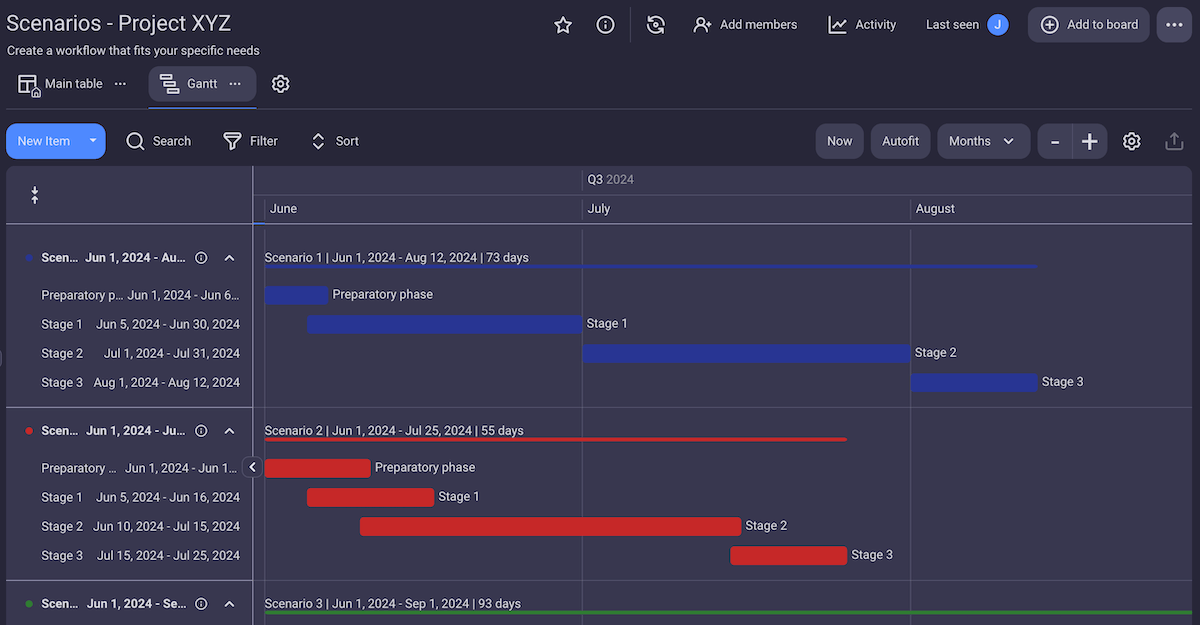
Enjoy effortless task management with Plaky
4. Leave buffer time
When creating a timeline, Metzler also advises leaving some buffer room for each milestone to account for any surprises that might cause delays and unnecessary stress.

“One should always ensure that there is a buffer built into the schedule to alleviate any late-night work sessions or stress. Individuals may find it beneficial to take their list of time-bound tasks and plan backwards, beginning from the due date of the project.”
Director of Corporate Strategy and Operations at Twilio and member of the Forbes Business Development Council, Sidharth Ramsinghaney, shares how buffers help you stay on schedule.

“We recently conducted a global M&A integration project where, despite significant benchmark parameters and preparation supporting our timelines, we hit unknown regulatory roadblocks.
Having built contingencies in our timeline enabled us to navigate through them without derailing the entire project.”
5. Set realistic deadlines
And yet, while buffer time helps alleviate some of the stress of tight deadlines and can be extremely useful when unexpected issues arise — it only works if you set realistic deadlines to begin with.
Ultimately, tall promises can cause more harm than good, highlights Ramsinghaney.

“Setting realistic deadlines is vital. Promising too much can result in burnout and delays.
I ensure that we stick to realistic timelines by asking if there is sufficient capacity in the team to get it done on time and if any additional risks have been taken into account.”
Create a realistic project schedule in Plaky
6. Prioritize tasks
Not all tasks carry equal weight. The success and timely delivery of your projects will depend on your ability to effectively prioritize tasks.
In most cases, you’ll be able to identify the minimal viable product (MVP) that will satisfy your stakeholders. All tasks that bring you closer to creating the MVP are must-have tasks and should go on the priority list.
For all intents and purposes, all other tasks can be treated as nice-to-haves and go on the low-priority list.
Splitting your tasks this way will ensure you and your team remain laser-focused on your goal and avoid getting distracted by less important tasks.
Within these 2 task groups, you may want to prioritize further by using high, medium, and low-priority statuses in your task management software of choice.
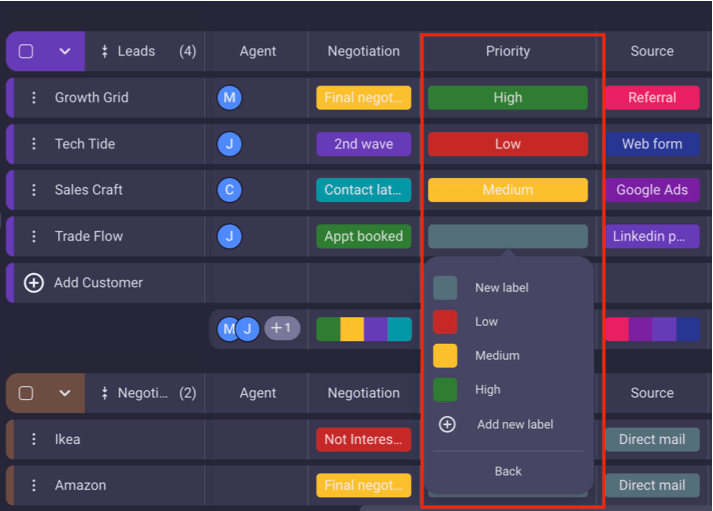
However, remember that priorities can and often will change throughout the project. As Ramsinghaney highlights, it’s important to stay flexible so that you can quickly and effectively respond to the new situation.

“Flexibility is key in project management. Sometimes, things might occur that require us to change what’s most important to do. In those situations, it’s important to be able to do what’s most important to get the project successfully back on track.
For example, during one digital transformation project, we came across a major technical problem that required immediate attention. Our resource agility and tactical priority shift allowed us to address the issue without delay or impact on the project schedule.”
7. Document project risks
Anything that can affect your project (positively or negatively) and is outside of your project scope is called a project risk.
Potential risks may pop up at any time throughout the project. Some risks may be completely unexpected and unavoidable, while others might never occur. But, keeping a tidy risk register from the earliest stages of the project will save you from being blindsided by issues you could have seen coming.
The risk register should be updated throughout the project, and it should contain:
- The name of the risk,
- Its probability and impact scores,
- Owner,
- Mitigation measures, and
- Mitigation budget, at the very least.
With this information at the ready, project managers can stay prepared if something goes wrong and react promptly, or, in some cases, completely sidestep the issue.

Keep track of your project risks with Plaky
8. Delegate work evenly
While it’s natural to want to give the most important work to the most skilled workers to ensure the quality of the final product, this strategy tends to backfire.
Overburdening a minority of employees with the bulk of the work will only result in delays in the project schedule and the employees’ eventual burnout. Instead, take care to evenly distribute the workload.
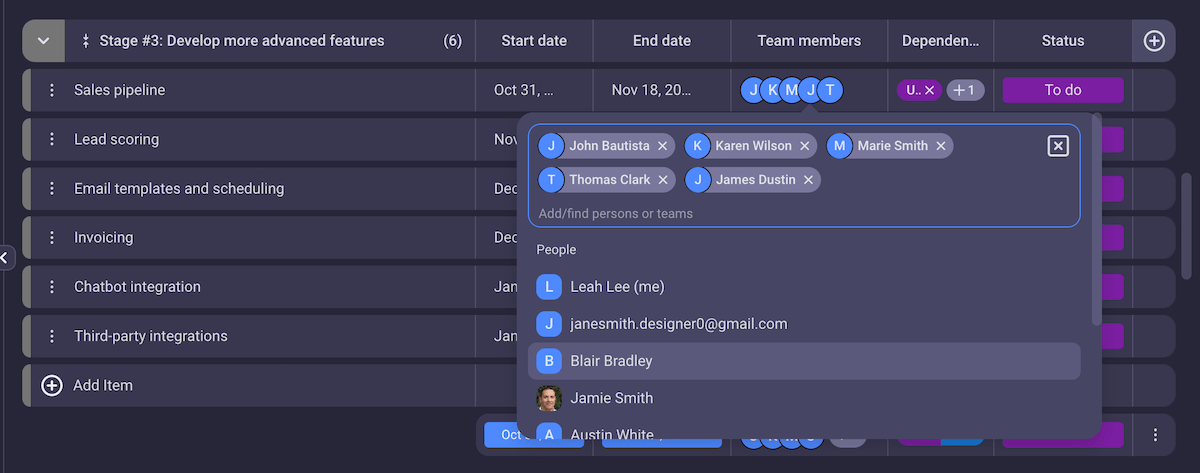
Sometimes, uneven work distribution happens unintentionally and without you noticing. In these situations, using the Kanban view can help you detect the issue more quickly than the standard Table view.
Thanks to its visual nature, the Kanban view makes it easy to detect where the bottlenecks are happening and zero in on the cause.
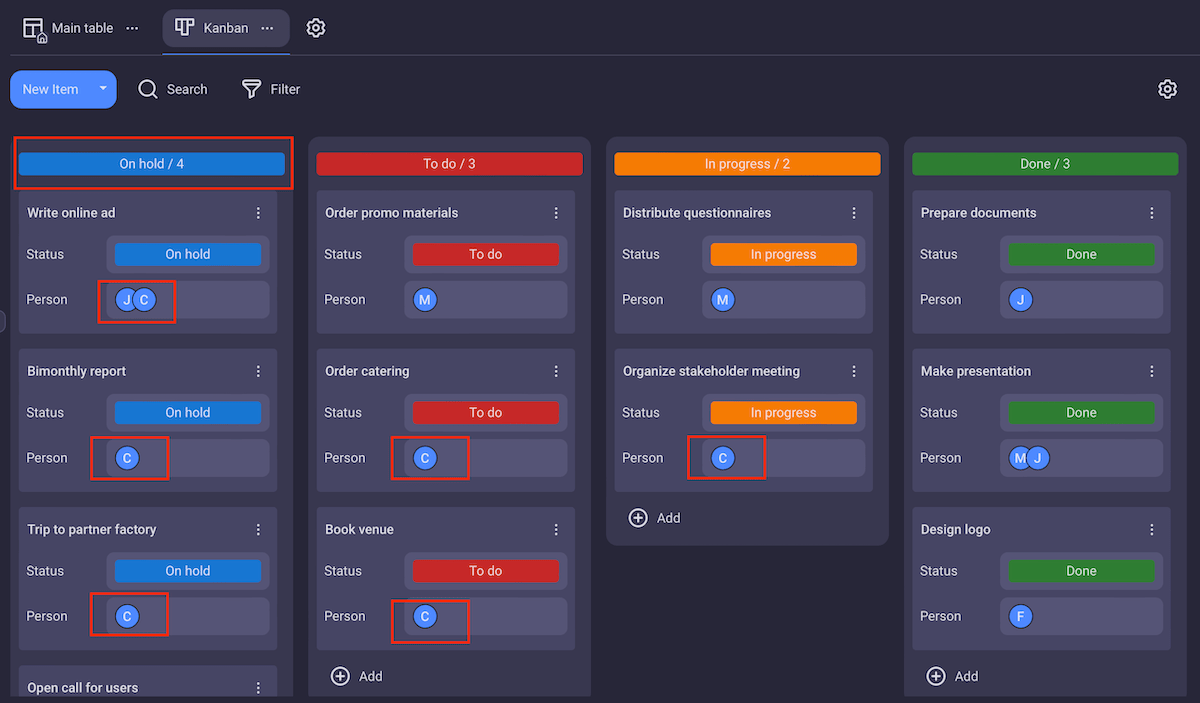
9. Communicate with your team and stakeholders
According to Ramsinghaney, if you want to stay on track with your project deadlines, encourage transparent communication within and among project teams — especially those that frequently collaborate.

“A culture that encourages team members to openly share ideas and address concerns can foster better problem-solving and innovation.
I always encourage collaboration across departments, and push our teams to share ideas, respond transparently, and recommend collaboration approaches.”
This can include:
- Leaving feedback in the comments section of a task,
- @mentioning people in conversations that relate to their work,
- Sharing files, or
- Simply notifying relevant parties about the current status of a task.
Frequent and open communication can help detect potential issues and solve problems — so use it to your advantage.

“While working on a product strategy initiative, we fostered cross-functional collaboration across engineering, product, ops, GTM, legal, pricing, and packaging and identified creative solutions that helped us achieve the project objectives on schedule ahead of time.”
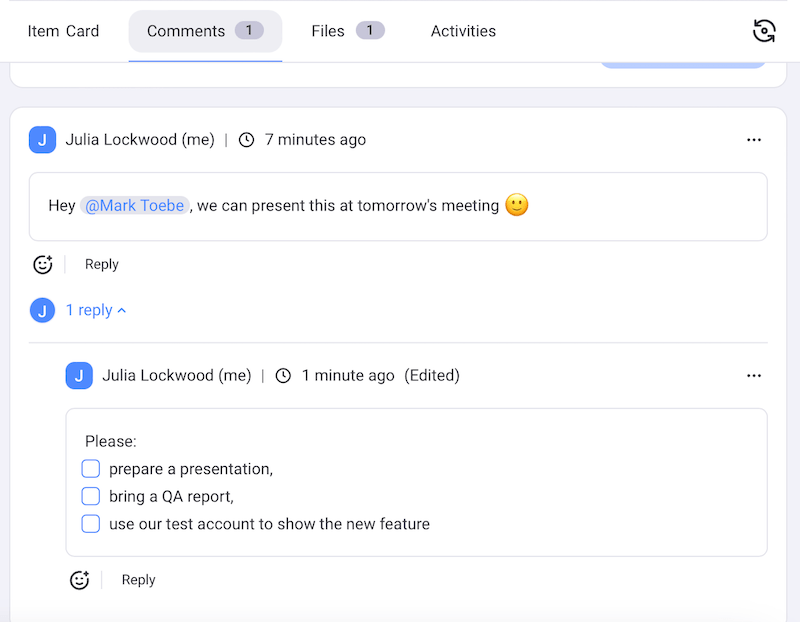
Similarly, as Ramsinghaney tells us, communication with project stakeholders is equally important.

“Regular communication is key. I check in with all stakeholders on progress, remove obstacles, and reassess plans with my team.
In one of my major HR transformation initiatives, I set up weekly status meetings and daily stand-ups, which significantly improved our ability to meet deadlines by ensuring everyone was aligned and any issues were promptly addressed.”
The most common way to reach project stakeholders is through periodic project status reports.
Status reports show stakeholders how far along the project is and how it’s progressing. What’s more, they list active project risks or ones that are likely to crop up in the near future.
Status reports are also useful for highlighting these issues and asking for help when necessary.
Encourage transparent collaboration with Plaky
10. Monitor progress
To ensure all your preparation doesn’t go to waste, continue monitoring your progress and updating documentation throughout the project.
The most effective way to monitor progress is to use project management software where all your project information is updated in real time, and you have access to all notifications and activity logs.
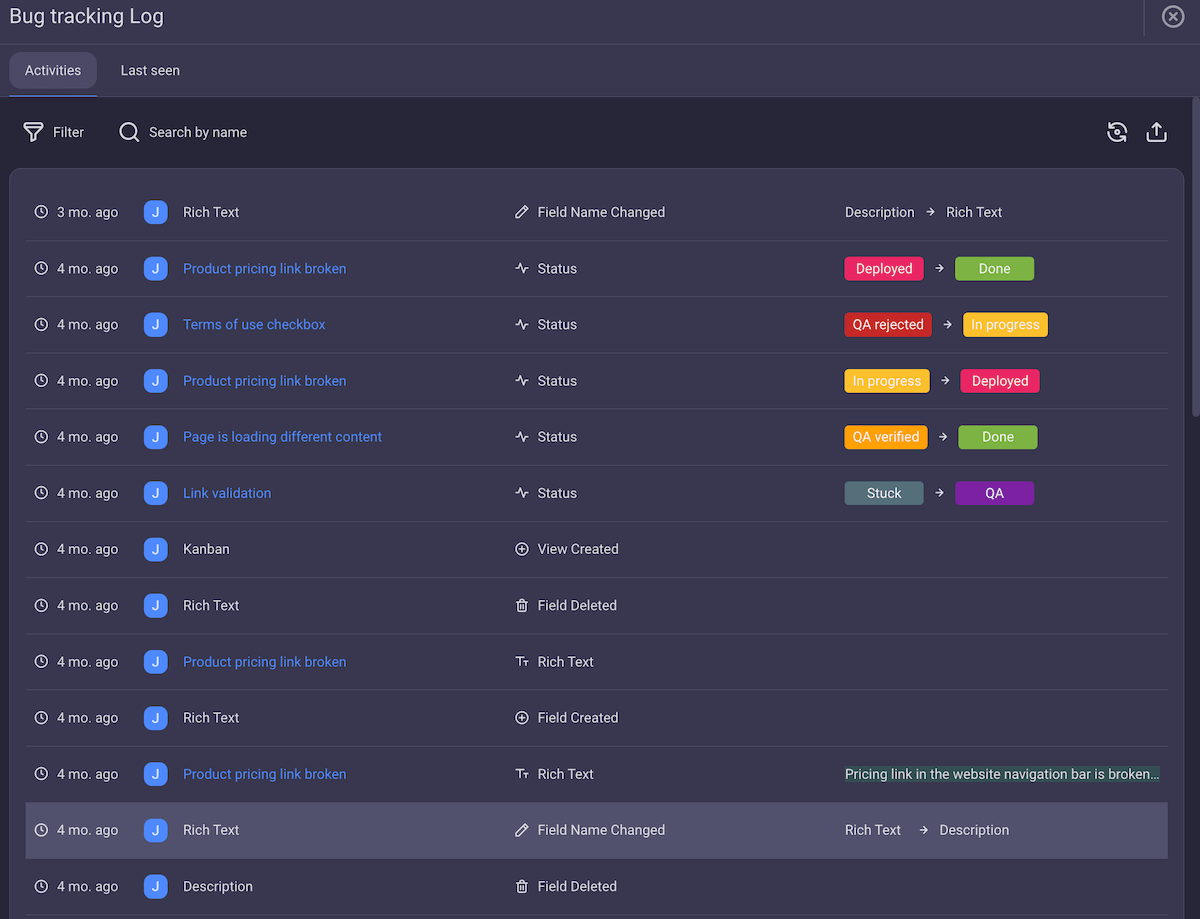
Monitoring progress means staying on top of the project at all times and being able to promptly respond to upcoming issues, or prevent them altogether.
This ensures that you minimize the delays that come with unexpected issues and meet even tight deadlines in a timely manner.
Conquer your deadlines with Plaky
Meeting deadlines is never as easy as it seems. But, with careful preparation and reliable project management software at your beck and call, you can maximize your chances of success.
If this sounds like exactly what you need, try Plaky.
Plaky is our project management software with a comprehensive Free Forever plan that will get you organized and confident in meeting your deadlines.
Plaky enables you to improve cross-team collaboration, as well as managerial control over the projects by allowing unlimited users on the free plan.
With this, you kill 2 birds with 1 stone:
- Your teams are gathered in one place with tasks seamlessly moving through the pipeline, from one team to another, and
- You as the manager get a complete overview of the project and who is working on what, without having to use or pay for different project management tools, each for a different team.
This also means that you don’t have to dig for information across multiple channels. Everything you need to manage your tasks, resources, and people is in one place, making it much easier to stay on top of your workload and meet deadlines consistently.
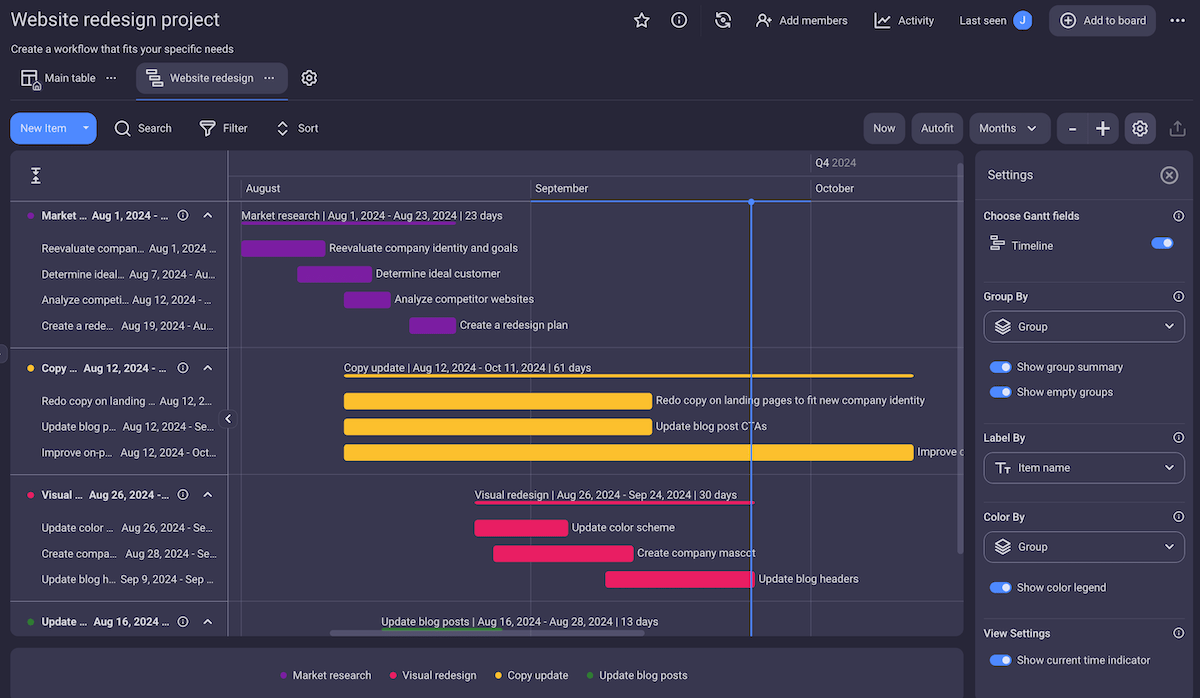
Plus, regardless of the type of project you’re working on and how you like to organize your data, you have full control over how your virtual office looks and can:
- Add or remove fields,
- Create custom statuses and labels,
- Switch between Table, Kanban, and Gantt views,
- Customize colors,
- Filter and sort the data any way you like, and so much more.
Remember — an organized workspace will ensure that you can always access the information you need at a glance and assess the situation to make sure:
- Your workload doesn’t spiral out of control and
- You finish everything on time.
Never miss a deadline again — organize your projects and manage tasks and teams with Plaky.

